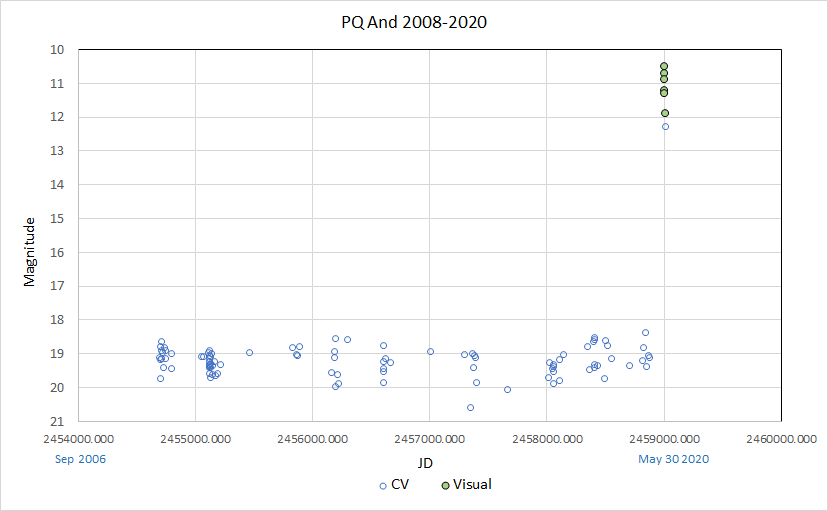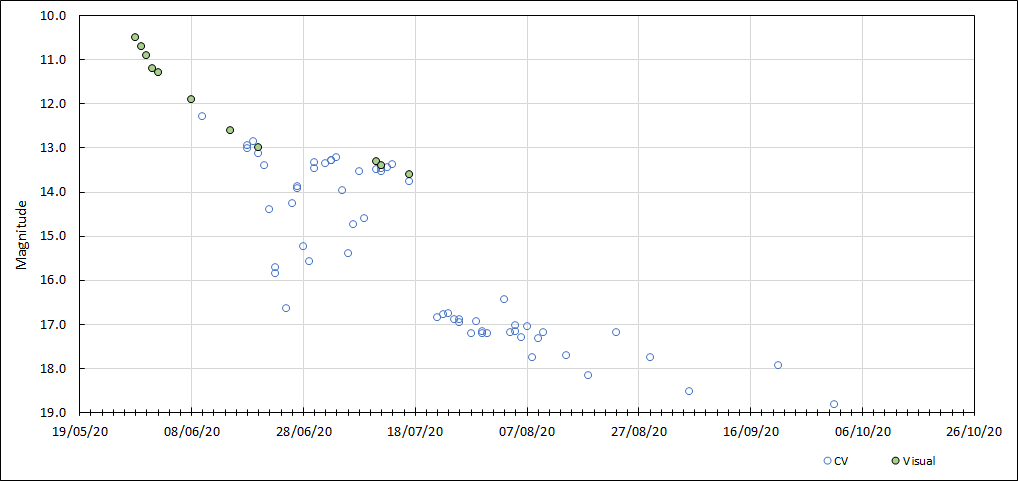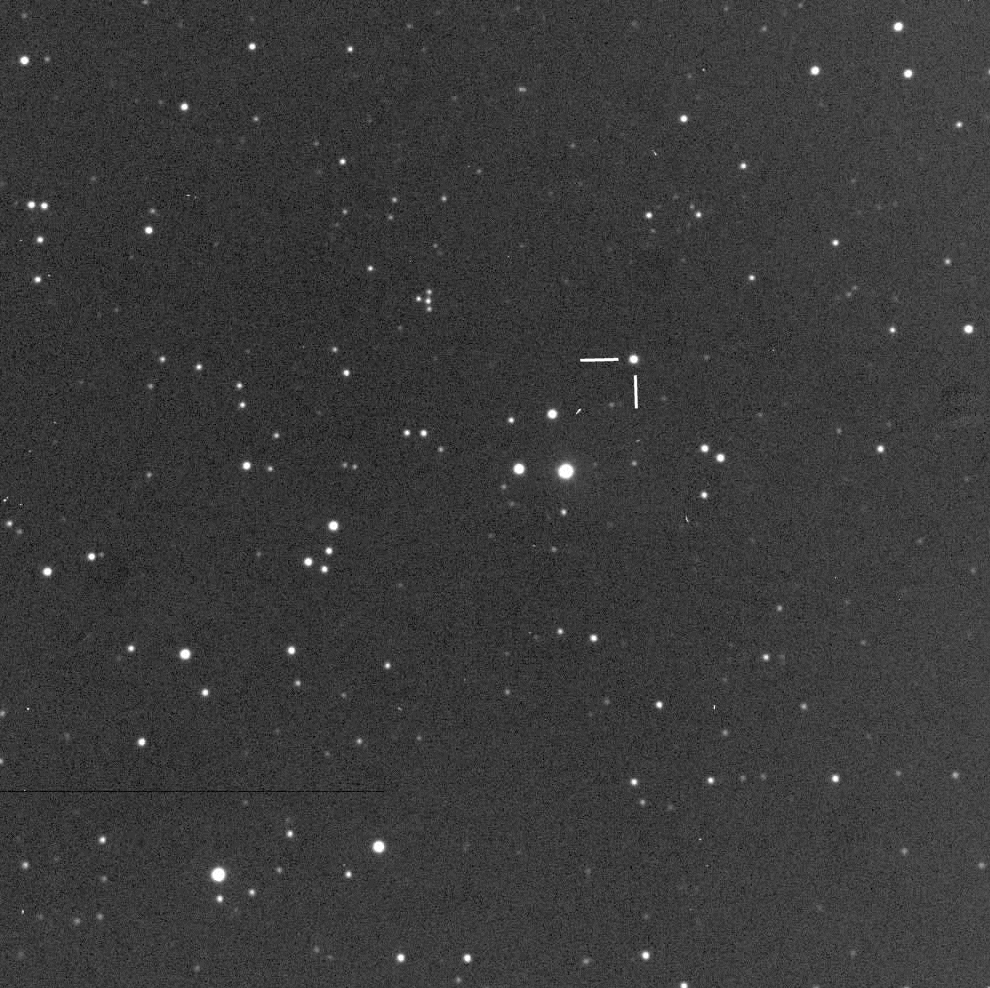
I was fortunate to see PQ And just after it was discovered by my friend and BAA colleague Dave McAdam in March 1988, and made just three positive observations before I lost it to twilight, thinking that it was a classical Nova and that I would never see the star again.
PQ And was reclassified as type UGWZ after plate searches by G. Richter revealed previous outbursts in 1938 and 1967. In 2008 I began observing the field with firstly the Bradford Robotic Telescope and later COAST. The above unfiltered CCD measures were obtained with both of these telescopes, and show PQ And varying in quiescence between magnitudes 18.0 and 21.0.
On 2020 May 28.776 UT, Japanese observer Kenji Hirosawa (Aichi, Japan) recorded PQ And in outburst at 10.48cG using a 20cm telescope and a Canon X9 camera. Thirty two years and two months after the initial discovery.

The field is very low in the NE just before sunrise during May and June, which will undoubtably prevent valuable photometric and spectroscopic observations at the important early stages of the outburst.
Bu July 1st 2020 two rebrightenings had occured, a phenomenon not seen in the initial outburst in 1988.
The visual observations were made with a 22cm telescope.

PQ And in outburst. 2020 June 10.209 UT Mag. 12.28CV 30 seconds exposure.
COAST North to top, West to left. Field 20'